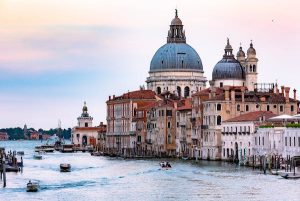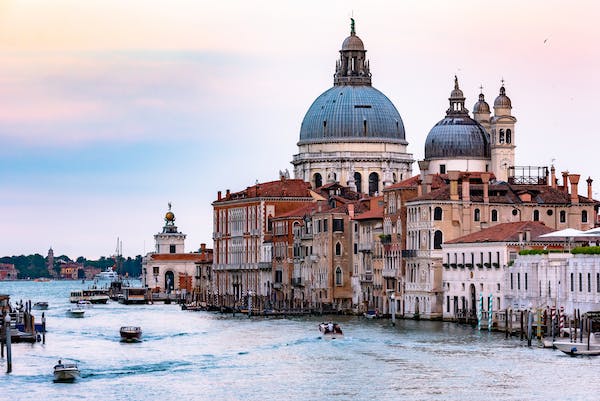This Italy Schengen visa is travelers with an excellent opportunity who wish to the many scenery and culture of any nation that is part of the Schengen region.
This privilege is accompanied by the right to stay within the area for no more than 90 days in a period which is not more than six months.
Italy as considered to be a part of Schengen zone is extending a warm welcome to anyone with the Schengen visa which allows them to set into its beautiful soil and also.
It’s nevertheless important to keep in mind that if your stay in Italy as well as other Schengen countries goes beyond the 90-day duration An alternative plan becomes essential.
In this case, potential travelers must start the application process to obtain the Italy National visa, which allows for extended stays that go beyond the restrictions of Schengen rules.
Additionally, it’s important to recognize that the requirements for obtaining an Italian visa have a level of advancment based on the nation of birth. Particularly, citizens of certain countries are not subject to the requirement to obtain the Italian Visa for shorter excursions.
The fortunate people can cross the Italian border with just their passports or other identification documents as a testimony to the agreements between nations that facilitate movement and cooperation between countries.
Do I Need Italy Schengen Visa
The need for an Italy visa is based on several aspects, mostly centered around your nationality, the reason of your trip, and the duration of your visit to the country.
Italy is a member of Schengen Area, has specific rules and regulations for the entry of foreigners.
1. Nationality
Your nationality plays an important aspect in determining if require an Italian visa. Certain citizens of certain countries are granted visa exemptions that allow the entry into Italy as well as into the Schengen Area for short stays (typically for up to 90 days) without needing an entry visa. These exemptions typically are built upon reciprocal arrangements between nations or based on European Union policies.
2. Purpose of Visit
The reason for your trip is also a factor. If you’re planning to travel to visit a business or tourist destination and family trips, or medical care in the Schengen Area You may be eligible for a temporary Schengen visa. However should you be planning to study, work, or engage in any other permanent activities in Italy it is likely that you’ll require a certain kind of visa to suit the reason for your visit.
3. Duration of Stay
The length of your planned duration of stay is an important factor. If your stay is not more than 90 days in a six-month period, you may apply for an Schengen visa. This visa permits you to travel to Italy and the other Schengen countries.
If your stay is extended beyond this period or if you intend to reside or work within Italy over a long time then you’ll have to apply for an Italian visa, also known as a residence permit.
4. Schengen Agreement
It is believed that the Schengen Agreement plays a pivotal part in Italy’s visa policy. If your country isn’t part of the Schengen Agreement then you’ll likely have to apply for an Schengen visa to travel to Italy as well as another Schengen country. In the event that your nation is one of the Schengen members, then you could be able to obtain a visa with fewer entry requirements.
It is essential to visit on the official site of the Italian consulate or the embassy of your country to find out the requirements of your particular visa.
Remember that policies and requirements for visas may be changed, so it’s best to check the most current information prior to planning any trips.
Infractions to proper visa procedure can result in a denial of entry or even legal consequences, which is why it is essential to go through the visa application process with care and at least a few days prior to your travel dates
How To Apply For Italy Visa
In order to apply in for an Italy visa To apply for a visa to Italy, follow these steps:
1. Find out the type of visa Choose the right visa category to suit your needs in travel (e.g. business, tourist study).
2. Gather the necessary documents: Gather the necessary documents, such as an original passport, Visa application forms, passport-sized photographs of your travel itinerary, proof of accommodation, travel insurance as well as financial reports.
3. Fill in an application form. Fill out your Schengen visa form in a precise manner. Double-check all details before submission.
4. Set up an appointment: Visit the official website for the Italian consulate or embassy of your country to set up a visa appointment. Make sure you schedule this appointment ahead of time, as appointments are likely to be filled quickly.
5. Make payment Make payment of the fee for a visa application as stated from the consulate. Keep the receipt for payment in case it will be needed during your visit.
6. Make an appointment on the day that you are scheduled go to the consulate or Embassy. Bring all the documents you need along with your payment receipt and the application form.
7. Participate in the interview: Certain visas may need an interview. Be prepared to answer any questions regarding the travel plan you have in mind, financial situation and the reason for your trip.
8. Biometrics submission: Submit your biometrics data, including fingerprints and a picture.
9. Processing time: The processing time can vary, but typically takes between 15 and 30 days. In this time the consulate will examine your application and the documents.
10. The decision will be made If you’re approved, you’ll receive a notification about the decision on visa. If your visa is approved your passport will be signed by the Visa.
11. Get your passport: If your visa has been granted, take your passport at the consulate. If you’re denied, you’ll get an email with the reasons.
12. Make your travel plans Once you have a passport in your hand make your travel plans based on the dates on the visa.
Keep in mind that visa applications processes and requirements are subject to be subject to change, so make sure you refer to the website that is official for your Italian consulate or Embassy in your country for latest information.
Frequently Asked Questions
What is the earliest date do I need to make an application to get the Italian8 Visa?
It is advised to make an application to get the Italy visa no later than 3 – six weeks prior to your date of travel. Making an application well in advance will ensure that you have plenty of time to collect all necessary documents, make an appointment, and be prepared for the possibility of unexpected delays to the process for your visa application.
How do I submit an Italy visa even if I’m not a citizen of the country from which I’m applying?
Yes, you are able to make an application for the Italy visa if you are from a nation isn’t a member of, provided that you have a legitimate justification to do so (e.g. it’s a trip to Italy for tourism, business, or research). However, you’ll require a visa application from an Italian consulate or an embassy with authority over the territory you’re currently. Be sure to read the requirements specific to applying for a non-resident visa on the official website of the consulate before beginning the application.
Conclusion
The process of obtaining an Italy visa is a meticulous process that requires careful preparation and strict adherence to the procedure for applying. Selecting the right visa type, gathering the necessary documents, attending appointments and allowing plenty of processing time are crucial steps.
By following these rules and keeping up-to-date with authoritative sources, those who apply will be able to be successful in the process and anticipate an enjoyable and pleasant trip to Italy.

Italy Visa Requirements and Application
